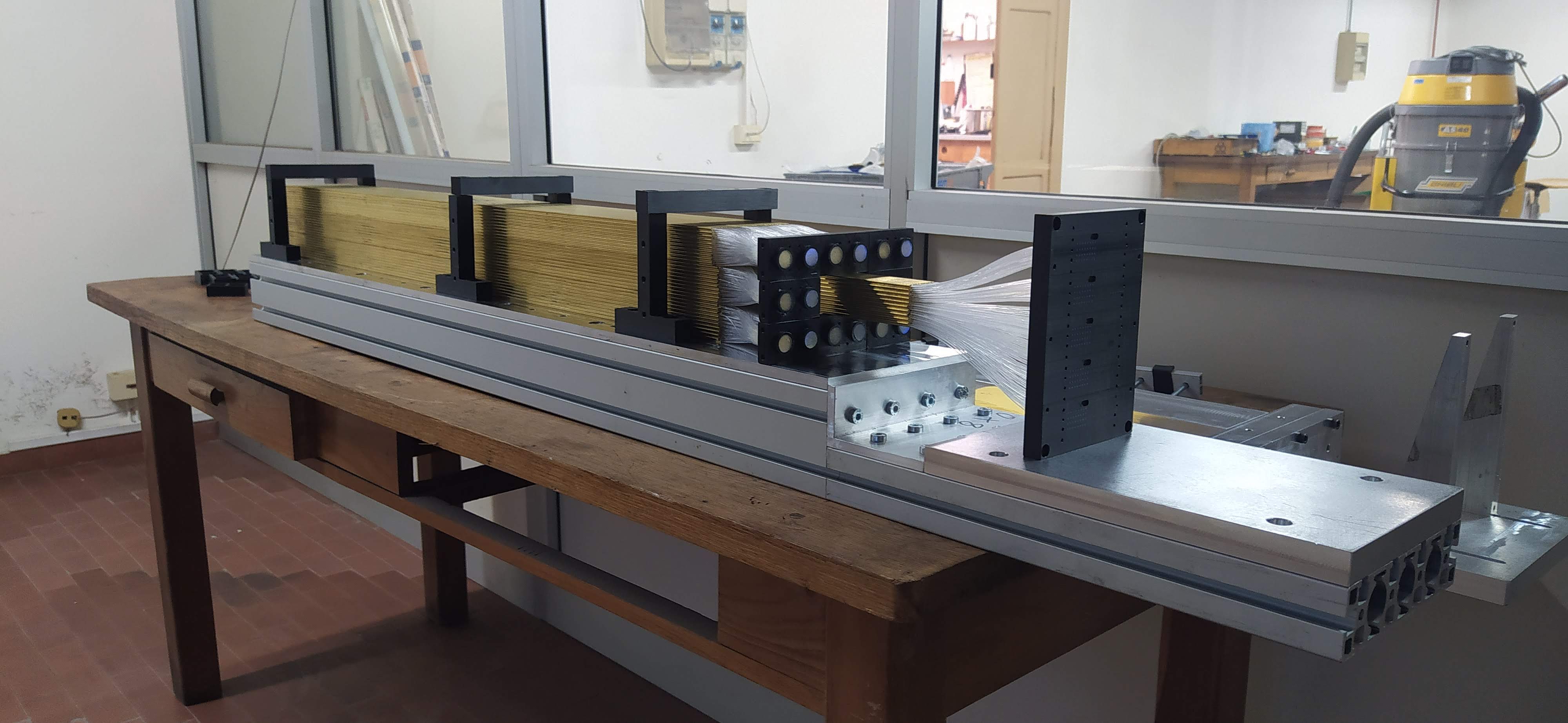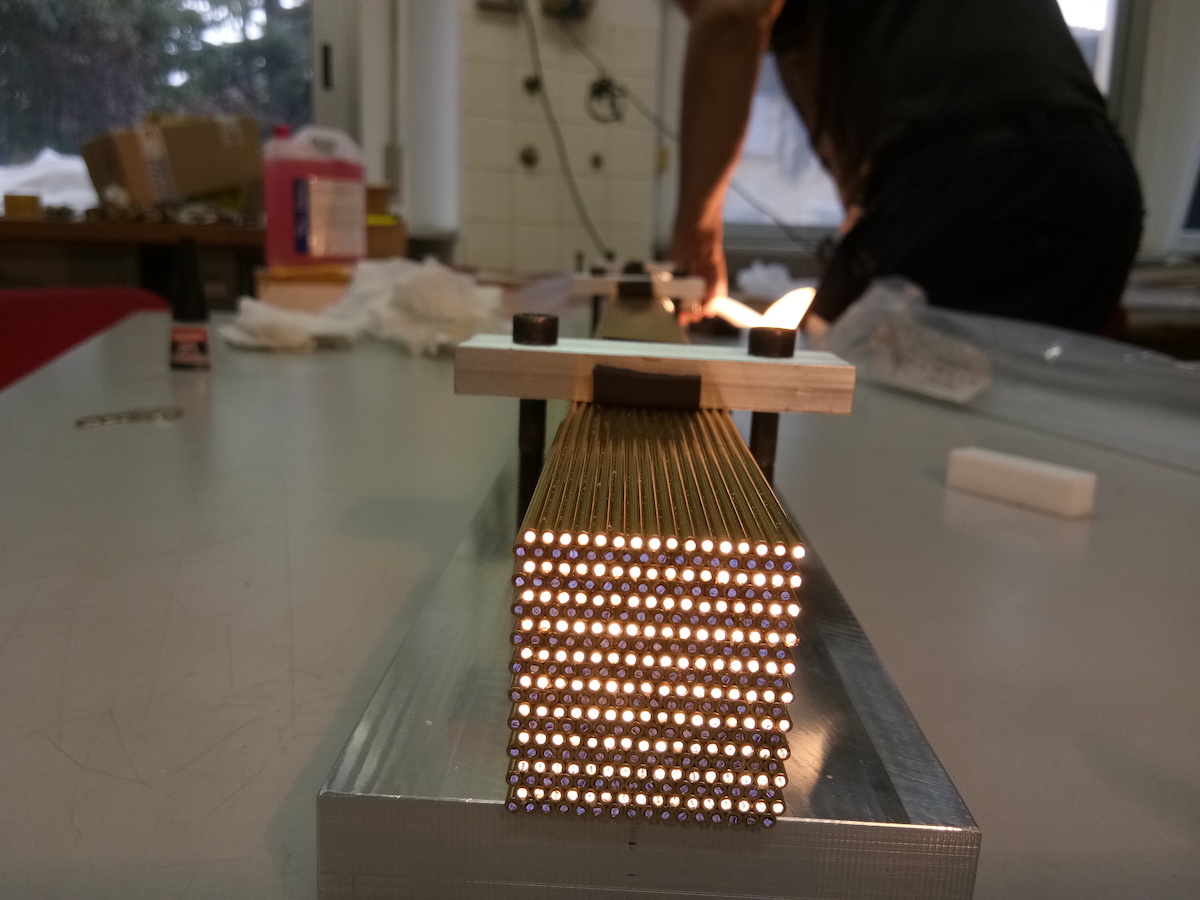
The prototype, designed for the containment of electromagnetic showers, was qualified on beam, first at DESY with a pure electron beam with energies up to 6 GeV and secondly at CERN with electrons up to 100 GeV (image: INFN-PV Lab)
By Roberto Ferrari (INFN) and Romualdo Santoro (Insubria University and INFN)
Highly granular dual-readout calorimeters would enable a better resolution in hadron calorimetry. This summer, a prototype was tested at DESY and CERN.
The fluctuations of the electromagnetic and hadronic components of hadronic showers is one of the most limiting factors for the energy resolution in hadron calorimetry. The development of highly granular dual-readout calorimeters has been proposed to overcome these limitations. This technology allows the recording of both components by different readout schemes and their subsequent separation, thus making it possible to resolve the structure of the hadron shower at an unprecedented level.

Within the EU-funded AIDAinnova project for the advancement and innovation of detectors at accelerators, Work Package 8 aims to facilitate the development of cutting-edge calorimeters for future colliders. The work package investigates the system-level integration of advanced highly-granular detectors and supports the research on new materials and studies of optical readout technologies for a time resolution in the order of tens of ps. The research on dual-readout calorimeters is addressed within Task 8.4.
A 10x10x100 cm3 prototype, designed for the containment of electromagnetic showers, was recently built and qualified on beam at the test-beam facilities at DESY (using a pure electron beam with energies up to 6 GeV) and CERN (using electrons with energies up to 100 GeV. The prototype consists of 9 modules, each made of 320 brass capillaries (2 mm OD) alternatively equipped with scintillating and clear fibres. All the fibres of the central module are instrumented with silicon photomultipliers (SiPM; one per capillary) while 2 photomultiplier tubes (PMT) per module are used elsewhere. The SiPM readout is based on the new readout system (FERS), designed by CAEN, to exploit the full performance of the Weeroc Citiroc1A ASIC with the wide dynamic range, linearity, and multi-photon quality, even when used with small-pitch-size (15 μm) and low-gain (1-3×105) SiPMs. Before the installation, all the SiPMs were qualified with ultra-fast LEDs and the response was equalised by applying the same overvoltage and tuning the amplifier settings.

The high-rate and good quality of the beams at DESY’s test-beam facility, made it possible to qualify the readout system and to define a procedure for calibrating the SiPM response, from ADC counts to photoelectrons, in a wide dynamic range (almost 60% of the SiPM cells). This allows for a compensation of the intrinsic non-linear response of the sensor, if needed. The analysis of both DESY and CERN data is still ongoing but preliminary results show a linearity of a few per mille in the low energy range (1-6 GeV) and better than the 3%-level for electrons with an energy up to 100 GeV. The light yield, in photoelectrons per GeV, has also been measured for both scintillating and Cherenkov signals. The highly granular core readout further allows for a detailed comparison of the shower shape in data and Monte Carlo simulations.
On top of the AIDAinnova project, the programme has received additional support grants to build a new "hadronic-size" demonstrator over the next three to four years with the goal to assess the performance and validate the Geant4 modelling of hadronic showers as well as to establish the technical feasibility of a scalable solution, optimised for the next-generation experiments.
